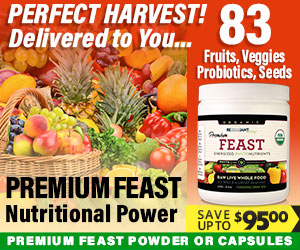Table of Contents
- 1. Jerusalem Artichoke
- 2. Icelandic Lagarsteg
- 3. Asparagus
- 4. Green Bananas
- 5. Onions
- 6. Garlic
- 7. Chicory Root
- 8. Jerusalem Artichoke Root
- 9. Leeks
- 10. Root Beer Syrup
- Frequently Asked Questions
- Conclusion
1. Jerusalem Artichoke
Rich in Inulin for Gut Health
The Jerusalem artichoke, also known as sunchoke, is a powerhouse among whole food prebiotics for 2025. Its high inulin content makes it an excellent prebiotic fiber that promotes healthy gut bacteria. Unlike other vegetables, Jerusalem artichoke is uniquely packed with this type of fiber, which resists digestion and reaches the colon intact to feed beneficial bacteria.
Research shows that inulin improves bowel movement regularity and enhances the diversity of gut microbiota. For those aiming to boost their prebiotic intake naturally, incorporating Jerusalem artichoke into meals is a simple yet effective strategy. You can roast, sauté, or add it raw to salads for a crunchy texture and subtle nutty flavor.
Practical Tips for Incorporation
If you’re new to Jerusalem artichoke, start with small amounts, such as a few slices in your salad or stir-fry. Some people may experience gas or bloating initially, which often diminishes as your gut adjusts. The key is gradual introduction to maximize benefits without discomfort.
In 2025, I recommend aiming for at least 1-2 servings of Jerusalem artichoke per week to harness its prebiotic benefits. It’s a delicious way to support your microbiome and enhance overall digestion naturally.
2. Icelandic Lagarsteg
Traditional Fermented Fish for Gut Diversity
While less common in mainstream diets, fermented fish like Icelandic lagarsteg can be a potent source of prebiotics in 2025. This traditional food undergoes fermentation that produces beneficial probiotics and prebiotics, nourishing your gut microbiota in balanced ways.
Fermented foods are a staple for gut health advocates. The fermentation process creates compounds that act as prebiotics, supporting the growth of probiotics and improving digestion. Incorporating small servings of lagarsteg into your diet can diversify your microbiome naturally.
Safety and Preparation Tips
When trying fermented fish like lagarsteg, ensure it’s sourced from reputable suppliers to guarantee safety and quality. Check for proper fermentation and storage. Adding a small amount to salads or serving with whole grain bread can make it a flavorful part of your gut-friendly meals.
3. Asparagus
High Fiber Content for Prebiotic Support
Asparagus is widely regarded as a fabulous source of dietary fiber that functions as a natural prebiotic. Its inulin levels help stimulate the growth of beneficial gut bacteria, making it a primo choice for gut health in 2025. Plus, asparagus is rich in antioxidants and vitamins, making it a nutritious staple.
Adding asparagus to your diet can strengthen your digestive health, improve nutrient absorption, and promote regularity. In particular, cooked or roasted asparagus releases its prebiotic compounds more effectively, though raw can also be beneficial.
Simple Ways to Enjoy Asparagus
Incorporate asparagus into your weekly meals by roasting with olive oil and garlic, adding it to salads, or steaming as a side dish. For a quick snack, lightly grill or sauté asparagus spears with lemon zest and herbs.
Studies suggest that regular consumption of asparagus can positively influence your gut microbiome, supporting overall health in 2025 and beyond.
4. Green Bananas
Resistant Starch for Robust Prebiotic Action
Green bananas are an accessible and versatile source of resistant starch â a type of carbohydrate that acts as a prebiotic by feeding beneficial bacteria in your gut. Unlike ripe bananas, green bananas contain higher amounts of resistant starch, which resists digestion and promotes healthy gut flora.
In 2025, many nutritionists recommend replacing ripe bananas with green ones to optimize prebiotic intake. Resistant starch not only supports digestion but also helps regulate blood sugar levels, making it a double win for health-conscious individuals.
Practical Tips for Usage
Eat green bananas raw, or incorporate them into smoothies and baked goods. You can also peel and freeze green bananas for smoothies or to make healthier chips. Start with small portions to avoid bloating, gradually increasing as your gut adapts.
The consistent inclusion of green bananas as part of your diet can significantly enhance your gut microbiome health in 2025 and help maintain overall well-being.
5. Onions
Rich in Prebiotic Fibers and Compounds
Onions have long been celebrated for their health benefits, and their high prebiotic content is a key reason why they should be part of your 2025 diet. They contain inulin and fructooligosaccharides (FOS), compounds that support the growth of friendly gut bacteria and improve intestinal health.
Eating a variety of onions such as yellow, red, and shallots can diversify your gut microbiota. Plus, onions add flavor and depth to dishes without needing extra salt or sugar, making them an easy addition to daily meals.
How to Incorporate Onions
Use onions raw in salads and salsas, sauté for stir-fries, or layer into roasted vegetable medleys. For best prebiotic benefits, aim to include onions at every mealâeither cooked or rawâseveral times a week.
Research in 2025 indicates that regular onion intake can help reduce inflammation and foster a healthy gut environment, supporting overall health long-term.
6. Garlic
Powerful Prebiotic and Immune Booster
Garlic is renowned not only for its flavor but also for its role as a potent whole food prebiotic. Its prebiotic compounds, including fructans, help feed beneficial gut bacteria, which can enhance digestion and immune function in 2025.
Adding garlic to your meals provides a double benefit: magic flavor and gut-boosting prebiotics. Raw garlic retains the highest amount of prebiotic compounds, but cooked garlic still offers significant benefits when added to roasted vegetables or sautés.
Huge Discount on the Best Certified Organic Nutrient Dense Supplement!
Using Garlic Effectively
Crush garlic and let it sit for a few minutes before cooking to activate all its prebiotic benefits. Use raw garlic in dressings or dips for maximum effect. Incorporate garlic regularly into your dishesâthink garlic bread, sauces, or roasted veggies.
Scientific findings in 2025 emphasize that garlic’s prebiotic compounds help improve gut diversity and immune response, making it a must-have for gut-supportive diets.
7. Chicory Root
One of the Richest Natural Sources of Inulin
Chicory root is arguably the most concentrated source of inulin among whole food prebiotics, making it a top choice for 2025. Itâs often added to coffee substitutes, but eating the root itself provides enormous benefits for your gut microbiome.
Chicory root supports digestive regularity, reduces bloating, and enhances the diversity of your gut bacteria. It’s a versatile ingredient to include in salads, baked goods, or brewed as a tea.
How to Use Chicory Root
You can find chicory root powder or dried roots at health food stores. Add powdered chicory to smoothies or sprinkle it over oatmeal. Roasted chicory slices serve as a crunchy snack or salad topping.
Research in 2025 continues to highlight the importance of inulin-rich foods like chicory root for sustained gut health and metabolic support.
8. Jerusalem Artichoke Root
Full of Prebiotic Fiber and Easy to Incorporate
The Jerusalem artichoke root is similar to the vegetable but concentrates inulin, making it one of the most effective whole food prebiotics for 2025. Consuming the root provides a concentrated dose of prebiotics that nourish your gut bacteria directly.
You can add sliced Jerusalem artichoke to soups, add it to roasted vegetable mixes, or pickled for a tangy addition. Its mild flavor blends well with many dishes, making it an easy choice for boosting prebiotic intake.
Preparation Tips for Maximum Benefit
To maximize prebiotic effects, prepare Jerusalem artichoke root by washing, peeling, and cooking gently. Include it 2-3 times a week to achieve optimal gut health benefits in 2025.
9. Leeks
Gentle and Delicious Prebiotic Plant
Leeks are a member of the allium family and are rich in prebiotic fibers, especially inulin. They are easier to digest than garlic and onions, making them suitable for those with sensitive stomachs wanting to boost their prebiotics in 2025.
Leeks can be added to soups, stews, or sautéed as a side dish. Their mild, sweet flavor enhances many recipes, while their prebiotic content supports a healthy, diverse gut microbiota.
Tips for Cooking Leeks
Trim, wash thoroughly to remove dirt, and slice leeks. Sauté with olive oil and herbs or add to broths for a flavorful prebiotic boost. Regular consumption can improve digestion and immune health, especially with the focus on whole food prebiotics in 2025.
10. Root Beer Syrup (Natural Prebiotic Version)
Innovative Prebiotic Food Trend for 2025
In 2025, innovative prebiotic foods like homemade root beer syrup are gaining popularity. Made from natural roots such as sassafras, licorice, and ginger, this syrup can be fermented or infused to foster beneficial gut bacteria.
Adding a small amount of homemade root beer syrup to sparkling water creates a flavorful prebiotic beverage that supports your microbiome. The fermentation process enhances prebiotic properties, making it a fun and tasty way to support digestive health.
DIY Tips for Prebiotic Root Beer
Use organic roots, simmer to extract flavors, and allow fermentation for added probiotic benefits. Consume in moderation, and enjoy as a natural alternative to sugary drinks. This is a creative way to include whole food prebiotics into your diet in 2025.
Frequently Asked Questions
1. What are the best whole food prebiotics to include in my diet in 2025?
Some of the top whole food prebiotics for 2025 include Jerusalem artichoke, chicory root, garlic, onions, asparagus, leeks, and green bananas. These foods naturally support your gut bacteria without relying on supplements.
2. How much whole food prebiotics should I consume daily?
Aim for at least 5-10 grams of prebiotic fibers per day from whole foods. Incorporating a variety of prebiotic-rich foods like onions, garlic, and asparagus several times a week can help achieve this goal naturally.
3. Can whole food prebiotics cause bloating or gas?
Yes, some people might experience bloating or gas when starting high-fiber prebiotics. The best approach is to introduce these foods gradually and increase intake over time to allow your gut to adjust.
4. Why are whole food prebiotics important for health in 2025?
Whole food prebiotics are vital because they nourish your beneficial gut bacteria, which impacts digestion, immune health, and overall well-being. As research advances, their role in preventing chronic diseases becomes clearer.
5. How can I incorporate more whole food prebiotics into my meals?
Use versatile ingredients like garlic, onions, asparagus, and bananas in your recipes. Start with simple additions like salads, stir-fries, and snacks, and gradually diversify your diet for maximum microbiome benefits.
Conclusion
In 2025, understanding and utilizing the best whole food prebiotics can transform your gut health and overall wellness. From Jerusalem artichoke to chicory root and garlic, these natural foods provide a safe, effective way to nourish your microbiome. Remember, the key is consistency â integrating these prebiotics into your daily diet will help optimize your health now and into the future. Embrace the power of whole food prebiotics and watch your gut thrive!





